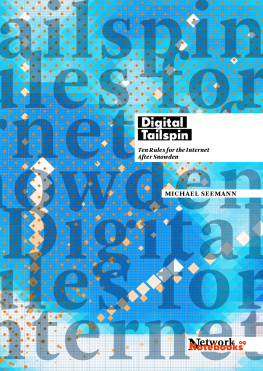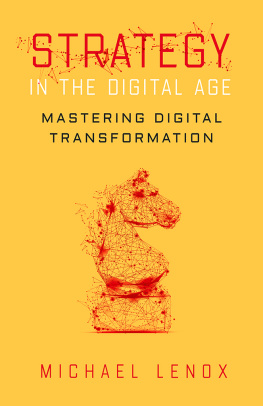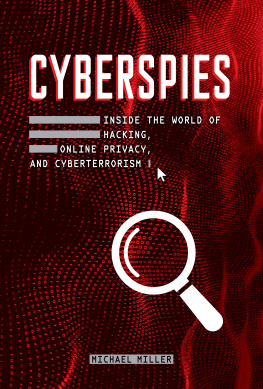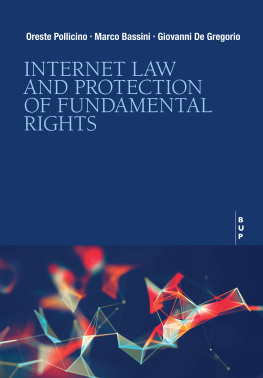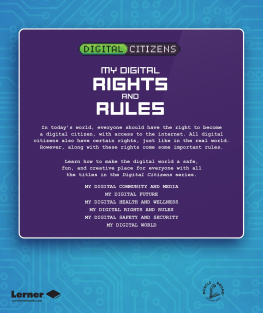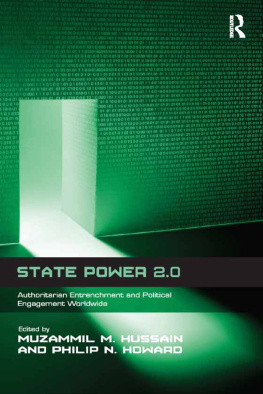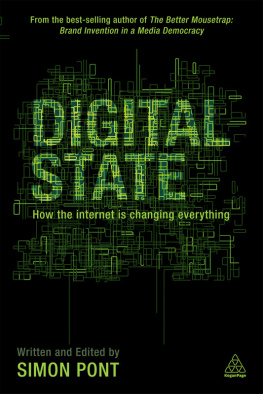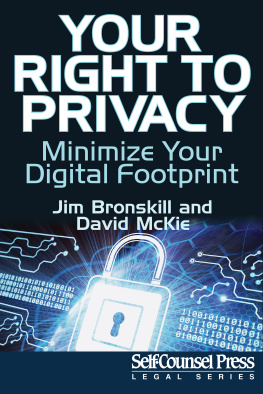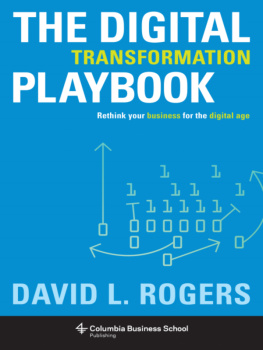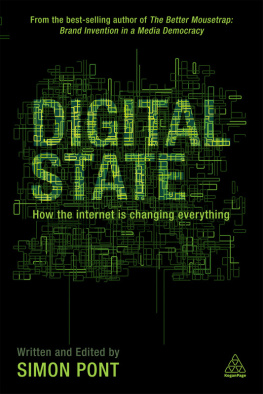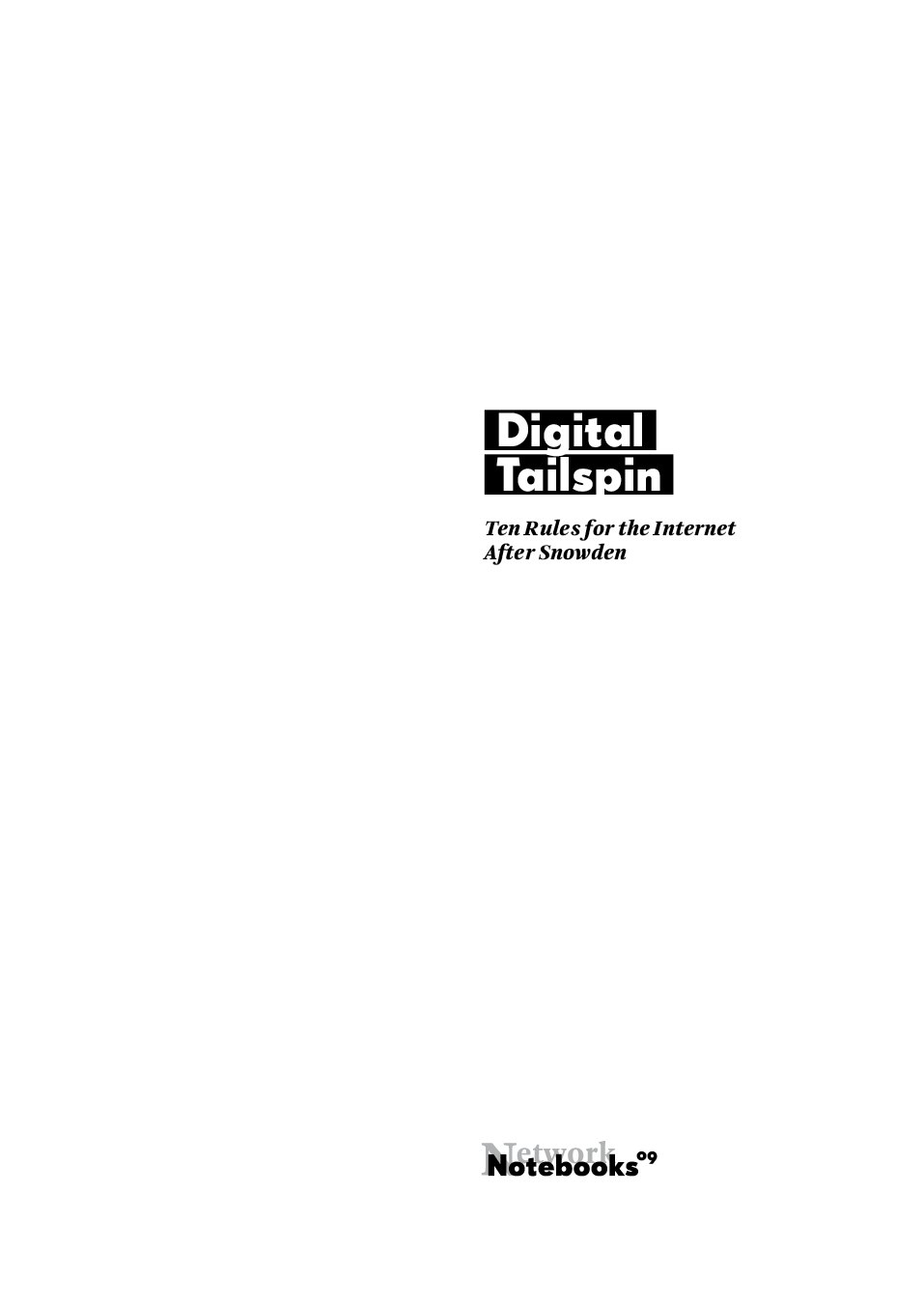Digital Tailspin: Ten Rules for the Internet After Snowden
Title Page
Digital Tailspin
Privacy, copyright, classified documents and state secrets, but also spontaneous network phenomena like flash mobs and hashtag revolutions, reveal one thing we lost control over the digital world. We experience a digital tailspin, or as Michael Seemann calls it in this essay: a loss of control or Kontrollverlust. Data we never knew existed is finding paths that were not intended and reveals information that we would never have thought of on our own.
Traditional institutions and concepts of freedom are threatened by this digital tailspin. But that doesnt mean we are lost. A new game emerges, where a different set of rules applies. To take part, we need to embrace a new way of thinking and a radical new ethics we need to search for freedom in completely different places. While the Old Game depended upon top-down hierarchies and a trust in the protective power of state justice systems, the New Game asks you to let go of all these certainties. Strategies to play the game of digital tailspin rely on flexibility, openness, transparency and what is dubbed antifragility. In Digital Tailspin: Ten Rules for the Internet After Snowden Michael Seemann examines which strategies are most appropriate in the New Game and why.
Michael Seemann studied Applied Cultural Studies in Lneburg. Since 2005 he is active on the internet with various projects. He founded twitkrit.de and Twitterlesung.de (reading Twitter), organized various events and runs the popular podcast wir.muessenreden.de. In 2010 he began the blog CTRL-verlust, about the loss of control over data on the internet. In 2014 he published Das neue Spiel after a successful crowdfunding campaign. Now he blogs at mspr0.de and writes for various media like Rolling Stone, TIME online, SPEX, Spiegel Online, c't and the DU magazine. He gives lectures on whistleblowing, privacy, copyright, internet culture and the crisis of institutions in times of Kontrollverlust.
Colophon
Network Notebook #09
Michael Seemann, Digital Tailspin: Ten Rules for the Internet After Snowden
This text is a translated and updated excerpt of Das Neue Spiel: Strategien fr die Welt nach dem digitalen Kontrollverlust, Freiburg: Orange Press, 2014. Translated from the German by Anwen Roberts
Network Notebooks editors: Geert Lovink and Miriam Rasch
Design: Medamo, Rotterdam
EPUB development: Andr Castro
Copy-editing: Margarita Osipian
Printer: Printvisie
Publisher: Institute of Network Cultures, Amsterdam
Supported by: Amsterdam University of Applied Sciences (Hogeschool van Amsterdam), Amsterdam Creative Industries Publishing, Stichting Democratie en Media
If you want to order copies please contact:
Institute of Network Cultures, Hogeschool van Amsterdam
http://www.networkcultures.org
t: +31 (0)20 59 51 865
EPUB and PDF editions of this publication are freely downloadable from: http://www.networkcultures.org/publications
License: WTFPDL Do What the Fuck You Want to Public Digital License, http://wtfpdl.net/
Amsterdam, March 2015
ISBN 978-90-822345-8-9 (print)
ISBN 978-90-822345-9-6 (EPUB)




Network Notebook Series
The Network Notebooks series presents new media research commissioned by the INC.
PREVIOUSLY PUBLISHED NETWORK NOTEBOOKS:
Network Notebooks 08
Brooke Wendt, The Allure of the Selfie: Instagram and the New Self Portrait, 2014.
Network Notebooks 07
Henry Warwick, Radical Tactics of the Offline Library, 2014.
Network Notebooks 06
Andreas Treske, The Inner Life of Video Spheres: Theory for the YouTube Generation, 2013.
Network Notebooks 05
Eric Kluitenberg, Legacies of Tactical Media, 2011.
Network Notebooks 04
Rosa Menkman, The Glitch Momentum, 2011.
Network Notebooks 03
Dymtri Kleiner, The Telekommunist Manifesto, 2010.
Network Notebooks 02
Rob van Kranenburg, The Internet of Things, 2008.
Network Notebooks 01
Rosalind Gill, Technobohemians of the New Cybertariat, 2007.
Contents
Acknowledgements
Many of the ideas presented here were developed over a number of years and in constant exchange with others on the net. More so, the entire project rests on the shoulders of many, as it was realized with a crowdfunding campaign. The writing of this book would have never been possible without the help of a number of people.
Id like to thank Geert Lovink, Miriam Rasch, and the Institute of Network Cultures in Amsterdam, for allowing me to publish an international version of my thoughts.
Many thanks to my translator, Anwen Roberts, for rendering my work into concise English and to my editor Valie Djordjevic, who has repeatedly nudged me back onto the track of legibility. It has been a great collaboration.
A big thank you to the beta readers who endured and improved my half-baked notes and outlines, especially Leonhard Dobusch, Caspar Clemens Mierau, and Jrgen Geuter.
Sincere thanks to Mark Wirblich and Maria Thaens, who afforded me shelter in their agency Bytes Brigade; the most beautiful office in Neuklln. Special thanks to Jrg Leupold, who in the past six months of madness spent those rare moments of spare time with me, and helped me to regenerate.
My gratitude to everyone who supported me in setting up the crowdfunding campaign and helped with the campaign video. I would particularly like to thank Mate Steinforth (camera), Gerlinde Schrn (editing), and Mark Wirblich for the original cover design.
And last but not least, my heartfelt thanks to all the crowdfunders who donated their money and trust, and without whom this text would not have been possible at all.
Introduction
Yet as we unleash living forces into our created machines, we lose control of them.
Kevin Kelly
In 2008, although I had been an active blogger for three years, I had only quite recently joined the online messaging service Twitter. It was a time of discovery and experimentation with new forms of social communication on the internet. In the German-speaking world in particular, the number of people prepared to discuss personal matters online and share their opinions on a larger scale was still very low. To me, the possibilities were inspiring and at the same time rather scary.

